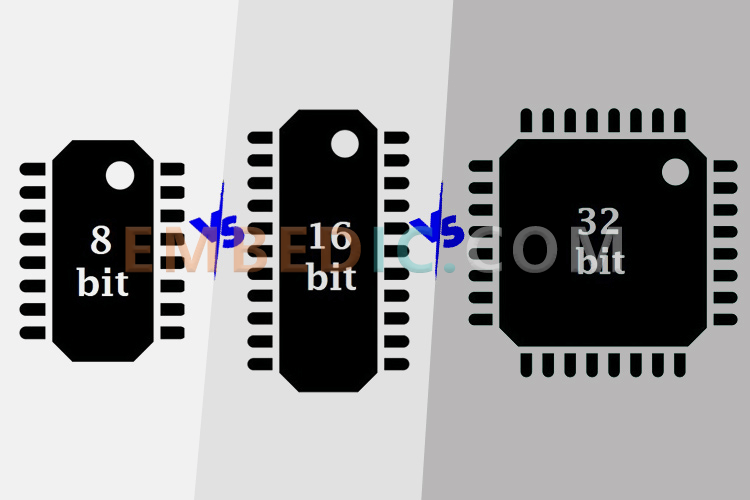Do you know the difference between 8-bit, 16-bit and 32-bit microcontrollers?

It refers to the width of the data processed by the CPU and the length of the data in the registers involved in the operation.
If the width of the bus is the same as the width of the data processed by the CPU at one time, then this width is the said number of microcontroller bits.
If the bus width is different from the width of the data processed by the CPU at one time.
How many bits wide is not the bus width, nor the width of the memory, like the 51 microcontroller's address bus is 16 bits, but it is an 8-bit machine. Like the ARM memory also has eight bits, but it is a 32-bit machine. Rather, it is the width of the data processed by the CPU, that is, the CPU's throughput of data at one time. For example, the same instruction: MOV R0 R2
Inside a 51 microcontroller, R0 and R2 are both 8 bits, so the 51 CPU can only process 8 bits of data at a time.
Inside an ARM, R0 and R2 are 32 bits, so the ARM CPU can handle 32 bits of data at a time. That's the difference.
In a word: the data length of the registers involved in the operation.
8-bit microcontrollers have a data bus width of 8 bits and can usually handle only 8 bits of data directly.
A 16-bit microcontroller has a data bus width of 16 bits and can usually handle 8-bit or 16-bit data directly.
The most essential difference is that the word length of the internal CPU is different, that is, the maximum number of bits of data processed by the CPU is different, there is a difference between 8-bit and 16-bit CPU, you can think of the ALU, the word length of registers, etc.. There are 32-bit DSP chips whose external interface data bus is 16-bit, and it is not possible to judge based on this.
There is a difference in speed, depending on the CPU, the word length of the registers. 8-bit microcontroller can not directly handle 16-bit data, to follow the 8-bit data to process, to be divided into several processes to complete. The 16-bit microcontroller can directly handle 16-bit data, because its ALU, registers, etc. are 16-bit, which can complete the action of 8-bit microcontroller in multiple steps at one time, especially for data processing, 16-bit microcontroller has its advantages. And most of the 16-bit microcontrollers are 16-bit according to the interface.
The 16-bit is faster than the 8-bit, and the 8-bit microcontroller takes a long time to develop and is less expensive. Most importantly, it is capable of performing the task of development in many applications. 16-bit microcontrollers are much more powerful than 8-bit ones in terms of functionality and are used only when needed.
Do you know the binary, do you know that the microcontroller in the calculation of the calculation of all the binary number of operations. So the most fundamental difference between an 8-bit microcontroller and a 16-bit microcontroller is that an 8-bit microcontroller can simultaneously perform the summation of two 8-bit binary numbers, while a 16-bit microcontroller is twice as large and can simultaneously allow the summation of two 16-bit binary numbers.
The CPU is said to be a computer of as many bits as it can handle binary numbers at the same time. There are also cases where the number of bits on the data bus is half the number of bits on the CPU, so it is called a quasi-how-many-bit computer.
For example, if both of the CPU and the data bus is 16 bits, it is a 16-bit computer; if the CPU is 16 bits but the data bus is 8 bits, it is a quasi-16-bit computer.
The original 16-bit microcontroller can be replaced by an 8-bit one, but the circuitry and procedures must be changed accordingly. After changing to an 8-bit machine, it must be able to meet the needs of your work in terms of function and speed.
Manufacturer: Texas Instruments
IC DSP FIX/FLOAT POINT 841FCBGA
Product Categories: DSP
Lifecycle:
RoHS:
Manufacturer: Texas Instruments
IC DSP FIX/FLOAT POINT 841FCBGA
Product Categories: DSP
Lifecycle:
RoHS:
Manufacturer: Texas Instruments
IC DSP FIX/FLOAT POINT 361NFBGA
Product Categories: DSP
Lifecycle:
RoHS:
Manufacturer: Texas Instruments
IC DSP FIX/FLOAT POINT 176HLQFP
Product Categories: DSP
Lifecycle:
RoHS:
Looking forward to your comment
Comment